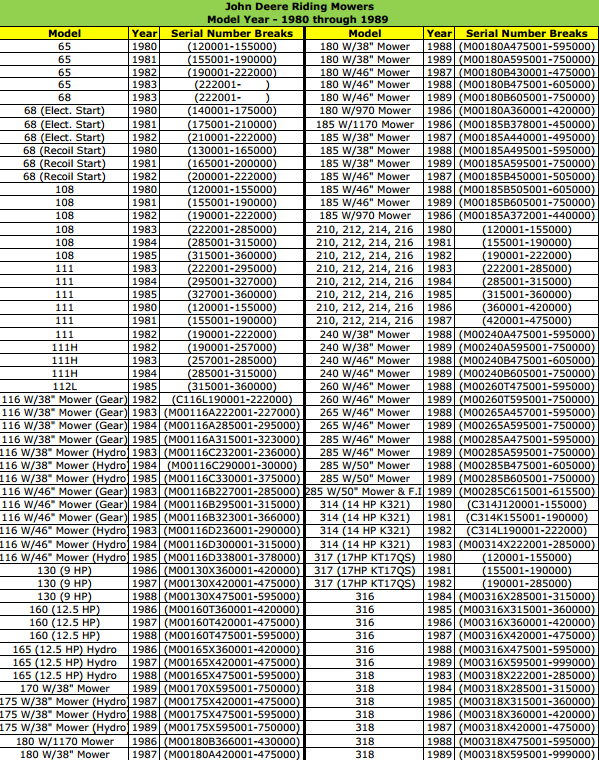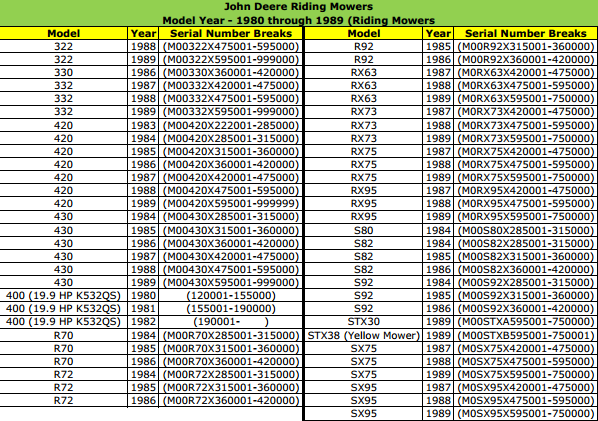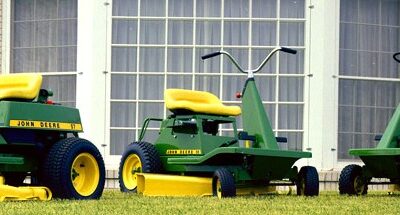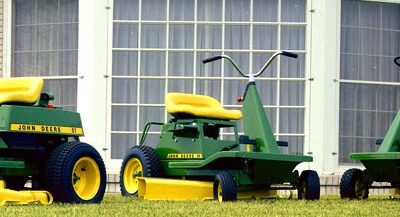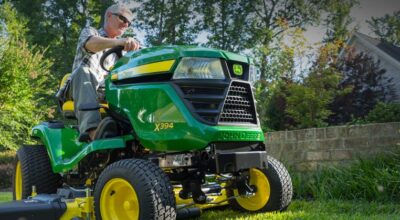Last week, we took a stroll through the 1970s, looking at the decade that brought about significant advances for John Deere riding mowers. Some of these advancements included upgrades to existing series, but a couple of new series were also introduced, making Deere a bigger player in the riding mower industry.
Today, we will look at some of the most critical upgrades and introductions of the 1980s, a decade that not only helped mend the gap between past and present, but also represented Deere’s 150th anniversary. Without any further delay, let’s go back in John Deere riding mower history once again!
Going Diesel: A few years into the 80s (1984 to be exact), John Deere made yet another splash in the pond of garden tractors with the introduction of the John Deere 430. This was Deere’s first tractor to combine a diesel engine with hydrostatic drive and power steering. The 430 was virtually a 420 model powered instead by a Yanmar 3-cylinder water-cooled diesel engine. Attachments and other general riding features remained the same as the 420, but the weight of the machine was increased to 1170 pounds, making it the heaviest and strongest John Deere garden tractor to date.
A 300 Series Redesign: The evolution of the 300 Series, keynoted by the introduction of the 318, was a time in John Deere riding mower history that rivaled the introduction of the 140. All of the previous attachments of the 140 and 300 Series could be used on the new 318, but many new features were added, including:
- Rear-frame redesign from “closed” to “open” configuration
- Annunciator lights implemented into the dash panel
- Square-shaped fender deck
- Reserve fuel tank for increased productivity
During the reign of the 318 in the 80s, Deere produced its 1 millionth lawn and garden tractor, with the 318 out-selling any of the other models. During this time, Deere also produced the 316 (similar to 318 but no power steering), the 330, 332, and 322 (all run on Yanmar liquid-cooled engines).
The “R” and “S” Series: For those looking for an economy riding mower specifically designed for smaller plots of land, the R Series (R70, R72, and R92) was a perfect fit. Standard features on the R Series included 5-speed gear-drive transmission for dependability and long life; in-line gearshift for on-the-go shifting; full-length welded steel frame, and a tight turning radius of 27 inches. The deluxe S Series riding mowers were designed for those who had lawns that were just slightly larger than those optimal for the R Series. The S80 and S82 had 8 horsepower engines with a 30-inch cutting width and electric start.
While we’ve highlighted most of the upgrades made to John Deere riding mowers in the 80s, here are a few charts showing the mowers by model, year, and serial number.
Hopefully, this trip back to the 80s provided a nice snapshot of the landmark improvements and introductions Deere made to its riding mower line at the time. Be sure to come back to our blog when we dive into the 90s edition of John Deere riding mower history! If you enjoyed this post or want to read others, feel free to connect with us on Facebook!

